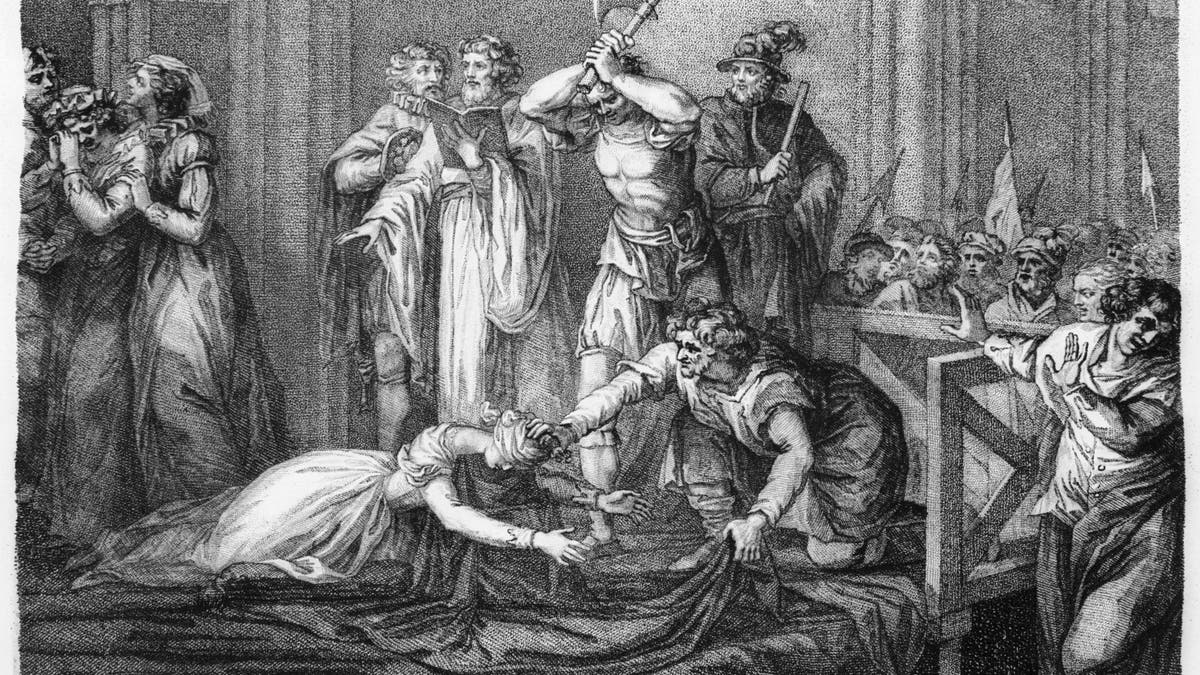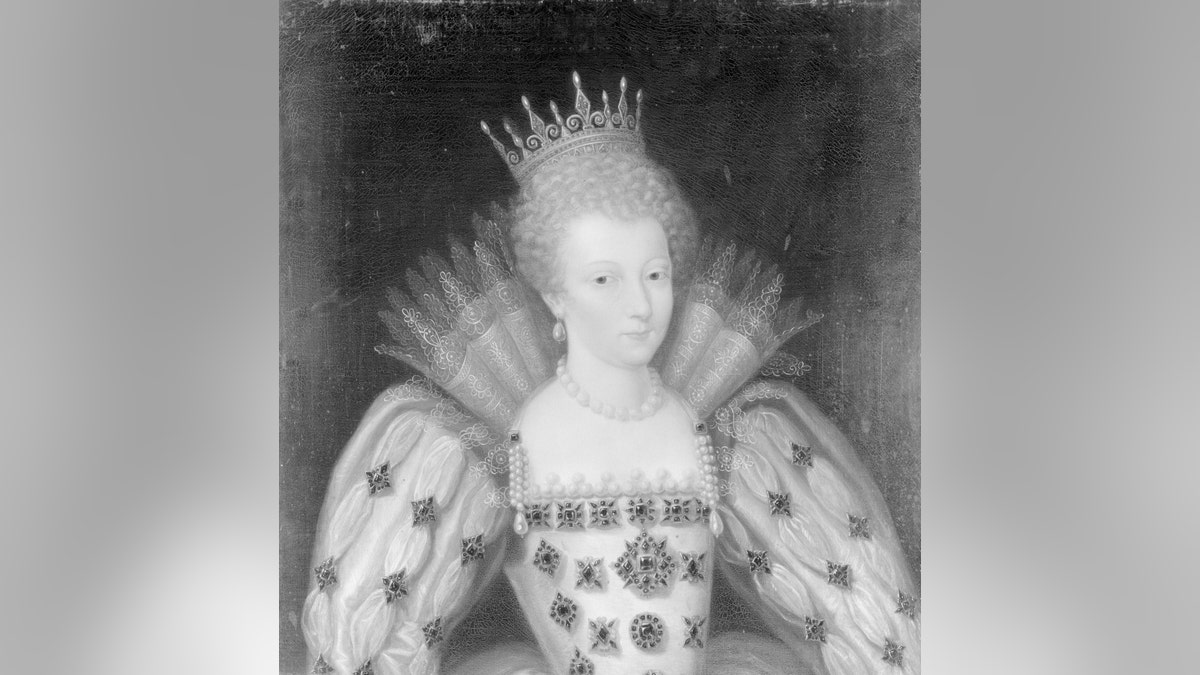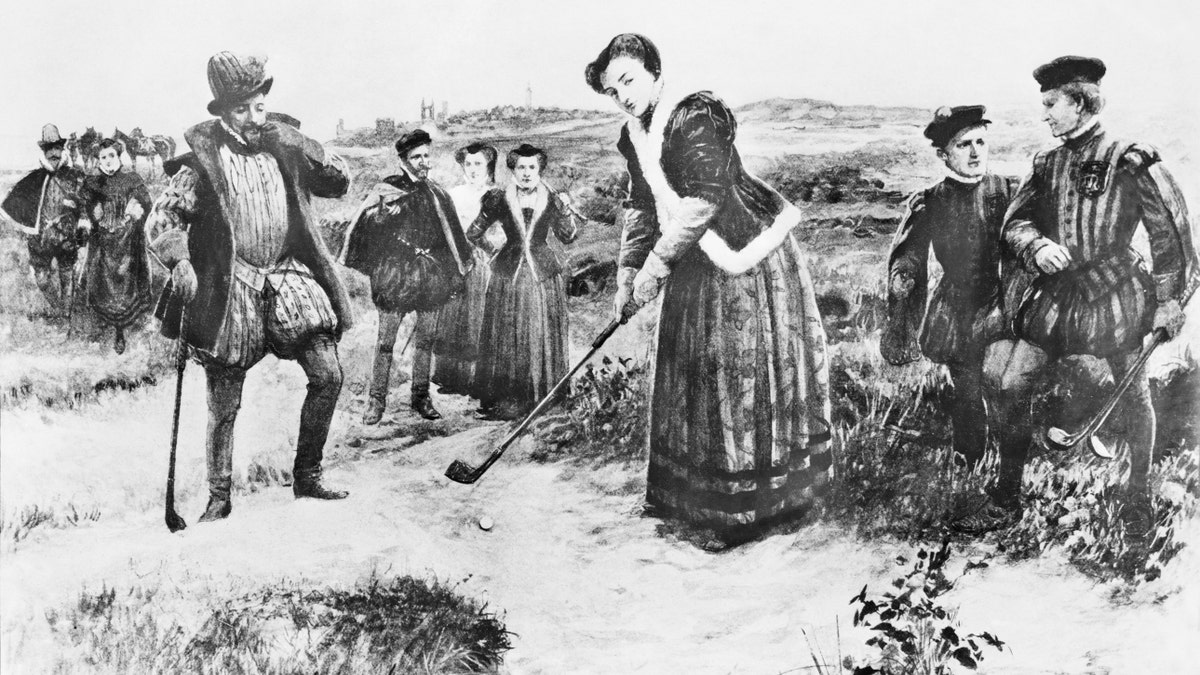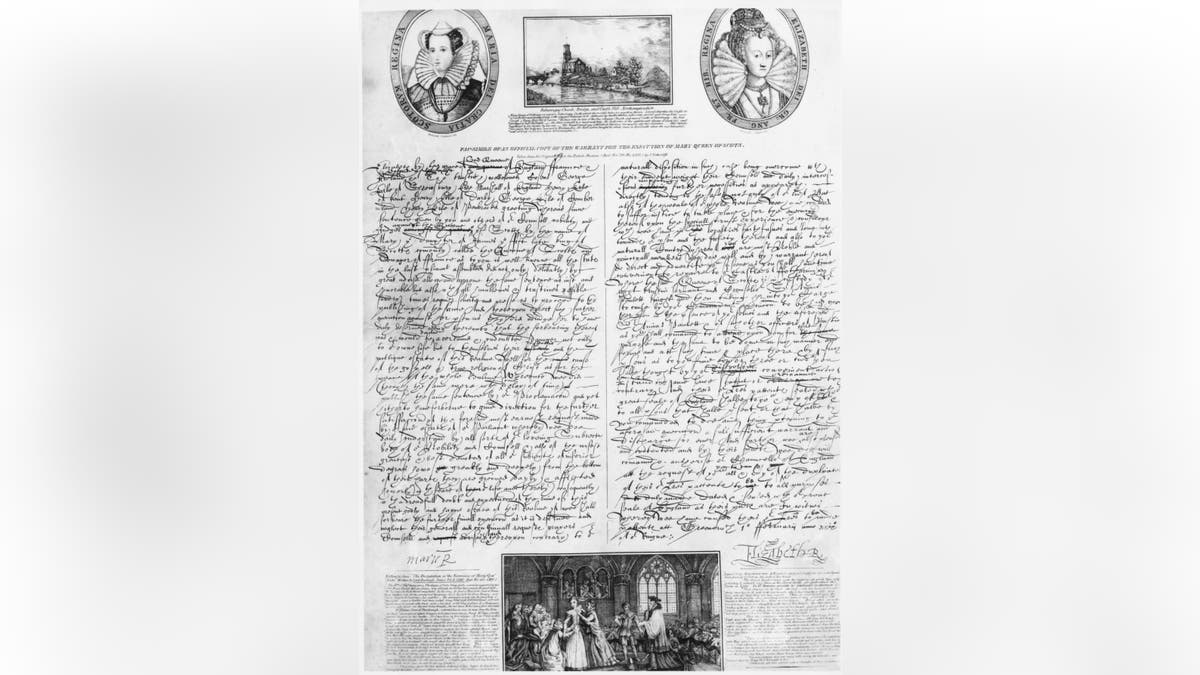New Fox Nation documentary highlights the making of the rift between the Sussexes and the royal family
Fox Nation’s ‘Who is Harry & Meghan?’ explores the relationship between Prince Harry and Meghan Markle and unpacks what ultimately led to the historic fallout between the couple and the royal family.
Mary, Queen of Scots was beheaded for treason in the Great Hall of Fotheringhay Castle in England by order of her cousin, Queen Elizabeth I, on this day in history, Feb. 8, 1587.
The Queen of Scotland's blood-soaked dog refused to leave the top of her torso where her head sat moments earlier, as the executioners cleaned up the gore of her brutal death.
"Into thy hands, O Lord, I commend my spirit," the Roman Catholic monarch famously uttered in Latin, her last words before the executioner's axe slashed through her neck.
Mary Stuart, as she was also known, was just 44 years old.
Her gruesome decapitation remains one of the most infamous incidents of family infighting in the sordid annals of the British monarchy. Her death still impacts western culture today.

The execution of Mary, Queen of Scots (1542-1587) on Feb. 8, 1857. She was heard to repeat, "Into thy Hands O Lord, do I commit my Spirit" many times as she went to her death. Mary ascended to the Scottish throne when she was six days old. She was convicted of plotting to overthrow Queen Elizabeth I. (Hulton Archive/Getty Images)
Among other outcomes, the execution of Mary, Queen of Scots set the stage for her son, James, to ascend to the British throne following the death of Queen Elizabeth I.
Her son is remembered in history as King James I of England, one of the most consequential monarchs in world history.
"Into thy hands, O Lord, I commend my spirit." — The last words of Mary, Queen of Scots
Among other achievements of his reign, King James gave the world its first widely available English-language Bible and watched as his subjects set sail to settle Jamestown and Plymouth in the New World.
"In the minutes before her death, Mary was led to a scaffold in the Great Hall, watched by witnesses the Earl of Shrewsbury and Earl of Kent," writes HistoryScotland.com.
"Her servants Jane Kennedy and Elizabeth Curle helped her to remove her outer garments and she was then blindfolded and knelt down, uttering her last words."

Mary, Queen of Scots (1542-1587). Painting by Serrur. (Getty Images)
Robert Wynkfield wrote later in a contemporary account of the royal execution: "Then Mr. Dean [Dr. Fletcher, Dean of Peterborough] said with a loud voice, 'So perish all the Queen's enemies,' and afterwards the Earl of Kent came to the dead body, and standing over it, with a loud voice said, 'Such end of all the Queen's and the Gospel's enemies."
NICARAGUA SENTENCES CATHOLIC PRIESTS TO 10 YEARS FOR CONSPIRACY AFTER CLOSED-DOOR TRIALS
Wynkfeld wrote in graphic detail of the moments that followed: "One of the executioners, pulling off her garters, espied her little dog which was crept under her cloths, which could not be gotten forth by force, yet afterward would not depart from the dead corpse, but came and lay between her head and her shoulders, which being imbrued with her blood was carried away and washed, as all things else were that had any blood was either burned or washed clean."
"The focus of a long series of Roman Catholic plots against Elizabeth … led to Elizabeth's ministers demanding Mary's execution." – British Royal Family
Mary's story still captures the imagination today.
"Crowned Queen of Scots at just nine months old; married, crowned Queen Consort of France and widowed all by the time she was 18 years old," writes the National Museums of Scotland in a synopsis of the dramatic early years of her life.

Mary, Queen of Scots, is said to be the first woman to regularly play golf, part of the sport's rich tradition in Scotland. Golfing here with Chastelard in attendance, playing at St. Andrews, 1563. (Drawn by A. Forestier/Getty Images)
Her rule over officially Protestant Scotland crumbled in 1567, amid accusations that she had conspired to murder her husband, Henry Stuart Lord Darnley, King of Scots — father of the future King James I of England.
She sought safe haven in the realm of her cousin Queen Elizabeth.
"Her life provided tragedy and romance, more dramatic than any legend." — HistoricUK.com
"Elizabeth, however, was unsure how to deal with this unexpected ‘guest’ and ordered Mary’s detention at Carlisle Castle," claims the National Museums of Scotland.
Mary spent the rest of her life in prison fit for a queen, with a staff of 30, including secretary, doctor and cooks.
TREASON! MAN CHARGED IN QUEEN ELIZABETH II ASSASSINATION ATTEMPT FACES MAXIMUM SENTENCING
"The focus of a long series of Roman Catholic plots against Elizabeth, culminating in the Babington Plot to assassinate the English queen, led to Elizabeth's ministers demanding Mary's execution," writes Royal.UK, the official website of the British Royal Family.
She was found guilty of treason on Oct. 25, 1586.

Death warrant of Mary, Queen of Scots (1542-1587), dated 1587. Mary's page, Anthony Babington, plotted to assassinate Elizabeth I. The conspiracy was discovered, and Mary was brought to trial in Oct. 1586. She was sentenced to death on Oct. 25, but Elizabeth didn't sign the warrant of execution until Feb. 1, 1587. The execution was carried out one week later. (Rischgitz/Getty Images)
"Despite the finality of the sentence, it would be months before Elizabeth could bring herself to sign the death of her cousin — a fellow queen," notes the National Museums of Scotland.
"The warrant was signed on 1 February 1587 and the execution was carried out a week later."
CLICK HERE TO SIGN UP FOR OUR LIFESTYLE NEWSLETTER
Mary, Queen of Scots is remembered by historians, and royal watchers around the world, for the incredible drama of a life born onto the throne of Scotland, her brief time as Queen of France, and the faith with which she faced her trial and execution.
"Give instructions, if it please you, that for my soul's sake part of what you owe me should be paid," Mary wrote in a letter to her brother-in-law, Henri III, King of France, in the early morning hours of Feb. 8.
"And that for the sake of Jesus Christ, to whom I shall pray for you tomorrow as I die, I be left enough to found a memorial mass and give the customary alms."

Effigy of Mary Queen of Scots (1542-1587) on her tomb. Queen regnant of Scotland (1542-1567) and queen consort of France (1559-1560). (Culture Club/Getty Images)
Mary’s body was embalmed and taken to Peterborough Cathedral.
King James I ascended to the throne of England in 1603. He had the body of his mother removed from Peterborough and reinterred at Westminster Abbey in 1612.
CLICK HERE TO GET THE FOX NEWS APP
Mary Stuart rests eternally in Westminster beside Queen Elizabeth I.
"Mary, Queen of Scots is perhaps the best known figure in Scotland's royal history," writes HistoricUK.com.
"Her life provided tragedy and romance, more dramatic than any legend."
For more Lifestyle articles, visit www.foxnews.com/lifestyle.

